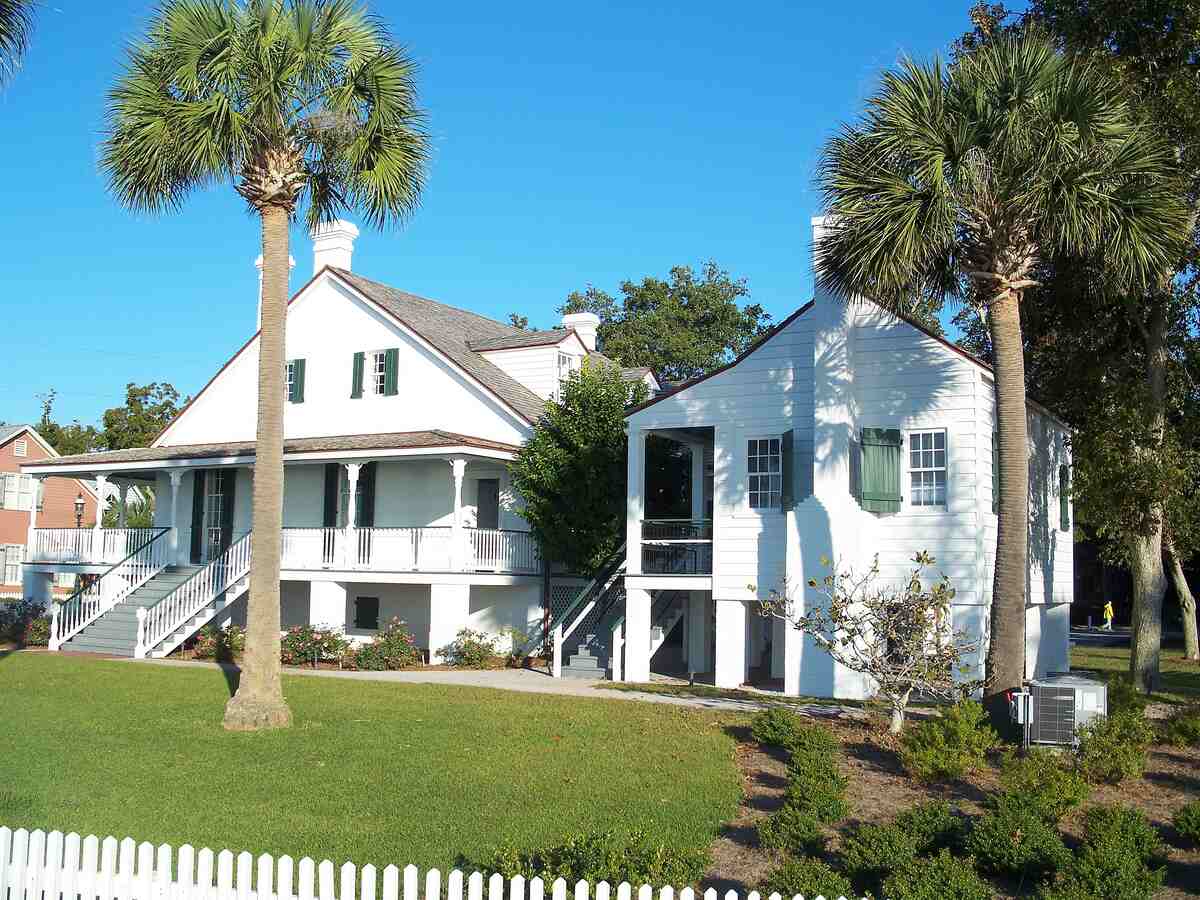
Renowned for its sugar-sand beaches and vibrant sunsets, Pensacola is where both locals and tourists alike come to bask in the beauty of nature. With the arrival of the sunny season, many homeowners are eager to learn the best summer lawn care tips for Pensacola to keep their yards looking pristine.
No need to worry! In this article, we’ll give you practical tips tailored to Pensacola’s climate to ensure your little slice of paradise stays lush and healthy all season long.
1. Make Every Drop Count
During the summer, Pensacola experiences its highest precipitation levels, with thunderstorms a common occurrence. So paying attention to your watering schedule and weather conditions is important to avoid overwatering.
The University of Florida recommends only watering your lawn when 30% to 50% of it is showing the three signs of wilt:
- Leaf blades are folding.
- Blue-gray color instead of deep green.
- Footprints remain visible, and the grass doesn’t spring back.
The best time to water your lawn, if you need to do it, is in the early morning. This allows the water to be absorbed by the grass without evaporating too quickly in the heat of the day. It also prevents the grass from remaining damp for too long, leading to fungal growth. Aim to apply between 1/2 to 3/4 inches of water per session.
2. Adjust Your Irrigation System
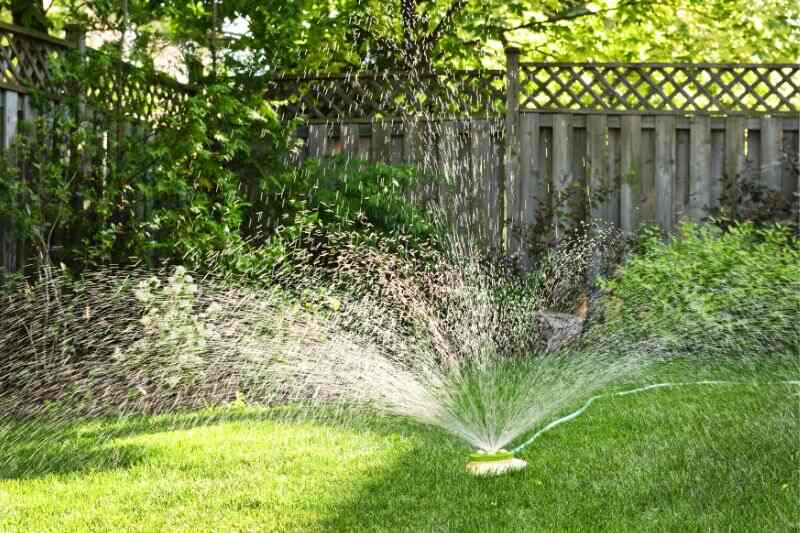
It’s also vital to remember to adjust your irrigation system’s settings during the summer months. With the increased rainfall and humidity, you may not need to water your lawn as often as during drier periods.
One helpful tool to have in your arsenal is a rain sensor. These devices detect when it’s raining and automatically shut off your irrigation system, preventing unnecessary watering. They’re easy to install and can save you money on your water bill while also helping to conserve this precious resource.
Note: If you don’t currently have a sprinkler system installed and are considering adding one to your Pensacola lawn, it will cost you between $2,400 and $4,200, depending on the size of your property and the complexity of the system.
3. Mowing to Perfection
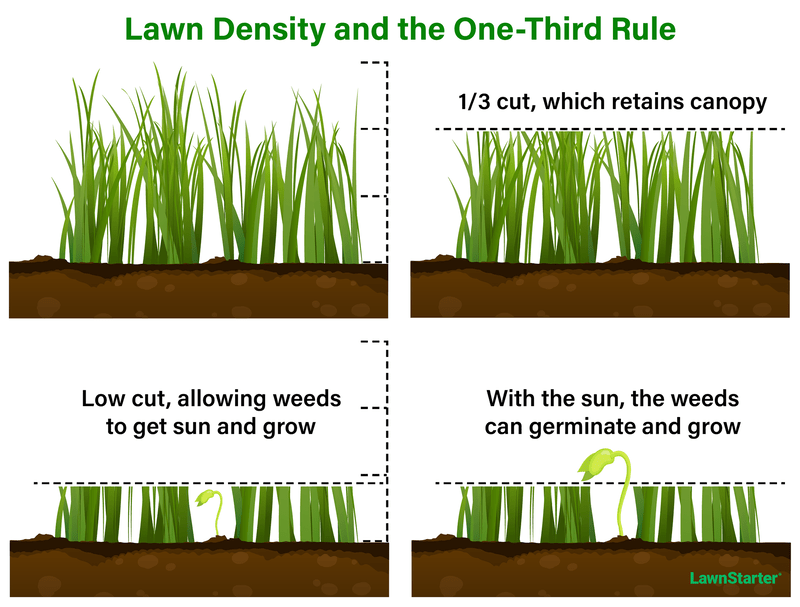
During the summer months in Pensacola, warm-season grasses experience their most active growth period. This means that you’ll likely need to mow your lawn more frequently than you would during other seasons. However, it’s crucial to approach mowing your lawn during the summer with a bit of extra care.
Firstly, letting your grass grow a bit longer than you would during other seasons is recommended. Mowing at the highest recommended height for your grass type provides more insulation and protection from the sun, which can help conserve moisture and keep your lawn healthy.
Here are the suggested mowing heights for the best grass types for Pensacola:
| Grass Type | Recommended Mowing Height |
| Centipedegrass | 1.5 – 2.5 |
| Bermudagrass | 1 – 2 |
| Zoysia | 2 – 2.5 |
| Bahiagrass | 3 – 4 |
| St. Augustine | 3.5 – 4 |
Note: Never removing more than 1/3 of the leaf blade is essential when mowing. Cutting off too much can cause stress to the grass and make it more susceptible to damage from heat. It’s also important to keep your mower blades sharp to ensure a clean cut.
Warning: Never mow a wet lawn! Doing this can dull your mower blades, leave the grass’ edges ragged, and lead to fungal infestations.
4. Get Rid of Weeds
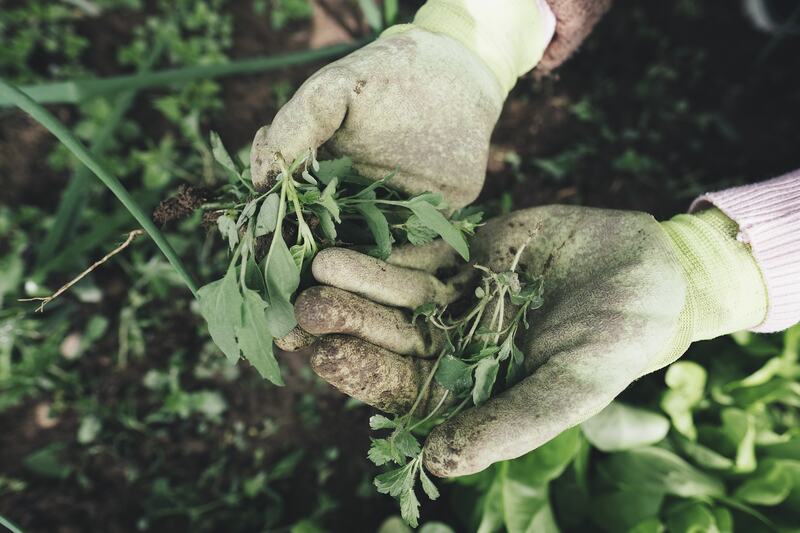
Summer weeds can be a major headache for Pensacola homeowners, and controlling them during summer can be challenging. This is because herbicides should not be applied when the temperature is above 85°F, as it can damage your lawn.
The best time to prevent summer weeds is actually during spring. If you didn’t get a chance to apply pre-emergent herbicides back then, you can spot-treat weeds with post-emergent herbicides. These herbicides are designed to kill weeds that have already sprouted. Still, using them carefully and only on the affected areas is essential.
Another option is to hand-pull the weeds by their roots, although this can be time-consuming and labor-intensive. Professional weed control costs around $95.
5. Resist Fertilizing
Summer is not the best time to fertilize your lawn in Pensacola, especially considering the area’s unique climate and environmental concerns.
One of the primary reasons to resist fertilizing during the summer months is the heavy rainfall that Pensacola experiences during this time. Rain can quickly wash away fertilizer from your lawn and carry it directly into the Gulf, causing environmental damage and potentially harming marine life.
Instead, opt to fertilize in the spring when conditions are more favorable and the risk of runoff is lower.
6. Careful With Pesticides
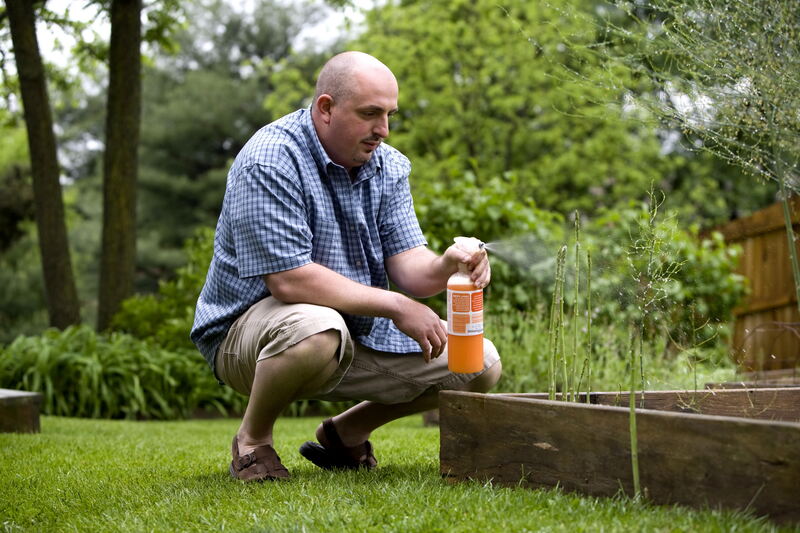
Just like with the application of fertilizers, using pesticides during the summer months in Pensacola requires a bit of extra care and attention. The frequent thunderstorms in the area can quickly wash pesticides out of your lawn and into storm drains, causing potential environmental damage.
The most common pests in the Florida Panhandle are sod webworms, armyworms, and chinch bugs, which affect mainly St. Augustine lawns. They might seem small, but just a few can wreak havoc on your lawn.
Other strategies can help prevent and control summer lawn pests in your lawn, in addition to pesticides. The best prevention strategy is proper lawn care, including:
- Proper watering
- Regular mowing
- Dethatching
- Aeration
You can also use natural methods, such as introducing beneficial nematodes, Beauveria bassiana, and beneficial insects (ladybugs, lacewings, and parasitic wasps).
7. Deal With Thatch Buildup
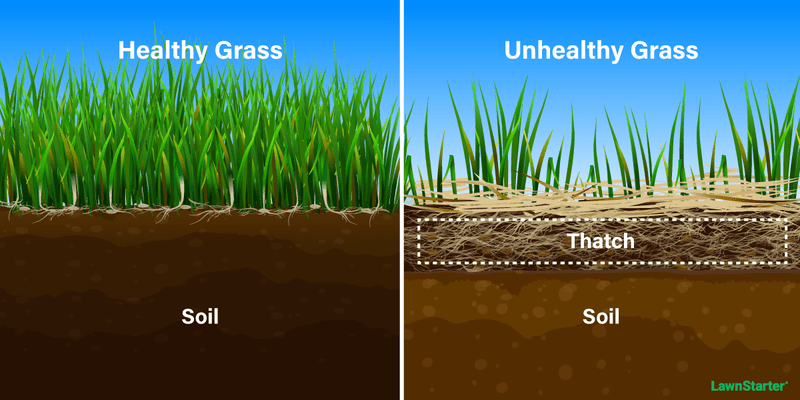
Thatch is a layer of dead grass, roots, and other organic material that accumulates between the soil surface and the growing grass blades. While some thatch is beneficial, excessive thatch buildup can prevent water and nutrients from reaching the roots of your lawn and serve as a habitat for pests.
Dethatching removes that excessive thatch buildup from your lawn, usually with a thatch rake or a specialized dethatching machine. It’s recommended to do this during the late spring to early summer months when your lawn is actively growing.
Removing thatch has several benefits for your lawn, including the following:
- Improved drainage
- Better nutrient absorption
- More soil exposure to sunlight
- Prevention of pests
- Better fertilizer effectiveness
- Prevention of water runoff during heavy thunderstorms (common in Pensacola)
8. Aerate Your Lawn
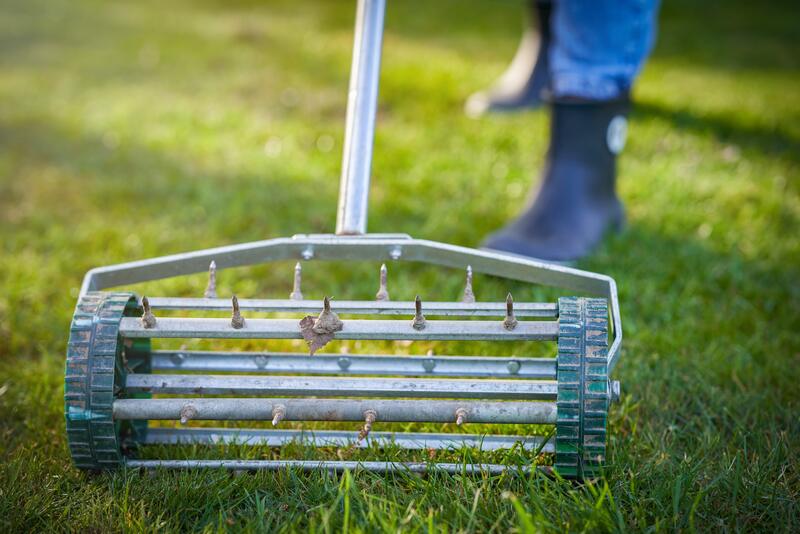
If you want your Pensacola lawn to look as pristine as the numerous golf courses in the area, aerating is an essential part of the process. Aerating your lawn involves perforating the soil with small holes, allowing air, water, and nutrients to flow through the roots more effectively.
Aerating your lawn is especially important if you have a heavily trafficked lawn, as foot traffic can contribute to soil compaction over time. Compacted soil can prevent roots from growing deeply and make it difficult for water and nutrients to reach them, leading to a less healthy and lush lawn.
It’s recommended to aerate your lawn during the growing season when the grass can quickly recover and fill in the holes the aerator leaves. To know whether your lawn needs aeration, perform the screwdriver test:
- Grab a screwdriver and head out to your lawn.
- Push the screwdriver into the soil, applying a bit of pressure.
- If the screwdriver is difficult to push into the soil or does not penetrate it at all, your soil is likely compacted and needs aeration.
- If the screwdriver pushes easily into the ground with little resistance, your soil is likely well-aerated.
- It’s a good idea to test several areas.
9. The Magic of Mulching
Mulching your lawn is an easy and effective way to improve the health and appearance of your lawn in Pensacola during summer. Mulch is any material that is spread over the soil surface, including grass clippings, leaves, other organic matter, and even inorganic materials like gravel and stone.
Using mulch in your lawn can provide several benefits, but specifically for Pensacola:
- It helps keep the soil temperatures cooler in the hot summer months.
- Prevents the germination of summer weeds.
- Adds nutrients to the soil when decomposed.
- Prevents water runoff.
The best way to add mulch to your lawn is by using a mulching mower that chops up grass into tiny pieces and spreads them around your yard. You can also use the mulching mower to mow over leaves, shred them, and return the nutrients to your soil.
Note: A mulching lawn mower costs an average of $303, and while it may be an investment upfront, the benefits of mulching your lawn can make it well worth the cost in the long run.
10. Prevent and Identify Lawn Diseases
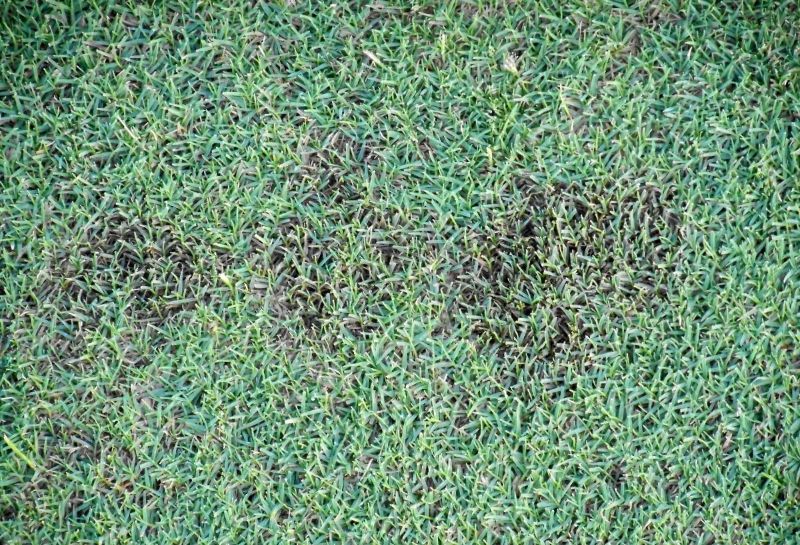
With the hot and humid weather, diseases can develop quickly and spread rapidly. Pensacola’s most common lawn diseases include gray leaf spot, brown patch, rust fungus, dollar spot, and take-all root rot.
Here are some tips for identifying lawn diseases:
- Keep an eye out for discolored or irregularly shaped patches in your lawn.
- Look for areas of your lawn that are thinning or have stunted growth.
- Check for small or large circular patches of dry, dead grass.
- Look for signs of fungal growth, such as powdery or rust-colored patches.
To prevent lawn diseases in Pensacola, you must practice proper lawn maintenance, including avoiding overwatering, mowing regularly, aerating and dethatching, and providing your lawn with adequate nutrients. By taking these steps, you can help ensure your lawn stays healthy and disease-free all year round.
FAQ About Summer Lawn Care Tips
Watering your lawn in the Florida Panhandle can be tricky, as the amount of water needed will depend on several factors, including the type of grass you have, the weather, and the soil type. However, as a general rule of thumb, aim to apply between 1/2 to 3/4 inches of water per week.
Choosing the right type of grass for your lawn in Pensacola, Florida, is an important decision, as the climate and soil conditions can be challenging for some grasses. The most common grass types for Pensacola are the following warm-season grasses:
● Centipedegrass
● Bermudagrass
● Zoysiagrass
● Bahiagrass
● St. Augustine
In Pensacola, it’s generally recommended to perform lawn fertilization in the spring, around April, when lawns start growing. This allows the grass to take advantage of the warmer weather and begin growing vigorously before the summer comes and rain washes off any remaining fertilizer.
Enjoy a Healthy Lawn
In conclusion, taking care of your lawn during the summer months in Pensacola requires a bit of effort and attention, but the results are well worth it. If you’re struggling with lawn issues or need extra help, don’t hesitate to hire a Pensacola lawn care pro to get your lawn on the right track this summer.
Main Image Credit: Ebyabe / Wikimedia Commons / CC BY-SA 3.0